Mandu, also known by the name of Mandavgarh, is located in the state of Madhya Pradesh. Mandu was earlier known by the name of Shadiabad- 'city of joy', which was christened by a Muslim ruler of that time, Alauddin Khilji. The ancient town of Mandu is popular because of its ancient history and rocky outcrop. The town was earlier the defense capital of the Rajput Parmara rulers, who ruled Mandu. Mandu is a celebration in stone, of life and joy, A tribute to the love shared between the poet-prince Baz Bahadur and his beautiful consort, Rani Roopmati. The balladeers of Malwa still sing of their euphoric romance.Perched along the Vindhya ranges at an altitude of 2,000 feet, Mandu, with its natural defenses, was originally the fort capital of the Parmar rulers of Malwa.Indeed the pervading spirit of Mandu was of gaiety; and its rulers built exquisite palaces like the Jahaz and Hindola Mahals, ornamental canals, baths and pavilions, as graceful and refined as those times of peace and plenty.
How to reach here:
By Air :Indore Ahilyabai Holkar Airport is the nearest airport to Mandu. Mandu is about 100 km from the airport.
By Rail : Nearest rail head is Ratlam railway station, which is about 125 km away from Mandu. This station is well connected to the rest of the major cities in India and is an important junction in the western railways.
Best time to visit: July to March.
Places you must visit:
The Darwazas: The 45 km parapets of walls that encircle Mandu are punctuated by 12 gateways. The main entrance to the fortress city is called Delhi Darwaza, for which the approach is through a series of gateways well fortified with walled enclosures.The fortress city strengthened by bastions such as the Alamgir and Bhangi Darwaza, through which the present road passes. Rampal Darwaza, Jahangir Gate and Tarapur Gate are some of the other main gateways.




Hindola Mahal, also known as the Swing Palace, is situated in Mandu. It has been named as Hindola Mahal due to the sloping side walls. Local inhabitants believe that the palace was constructed during the reign of Hoshang Shah in 1425. It is a T-shaped structure with crossbars in the exterior walls.


Inverted Hindu Sculptures being used as wall decor.
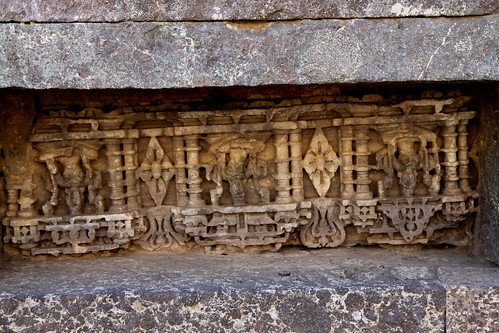
Jahaz Mahal, also known as the Ship Palace was built in the 15th century by Ghiyas-ud-din, son of Emperor Mohammed Shah. The two storey palace lies between two artificial lakes, the Munj Talab and the Kapur Talab. This mahal was used by Ghiyas-ud-din as his harem. The palace has open pavilions, an open terrace and balconies.The Taveli Mahal, situated to the south of the Jahaz Mahal, has an antiquity gallery displaying fragments of vessels and utensils, along with some stone images that were found at this site.



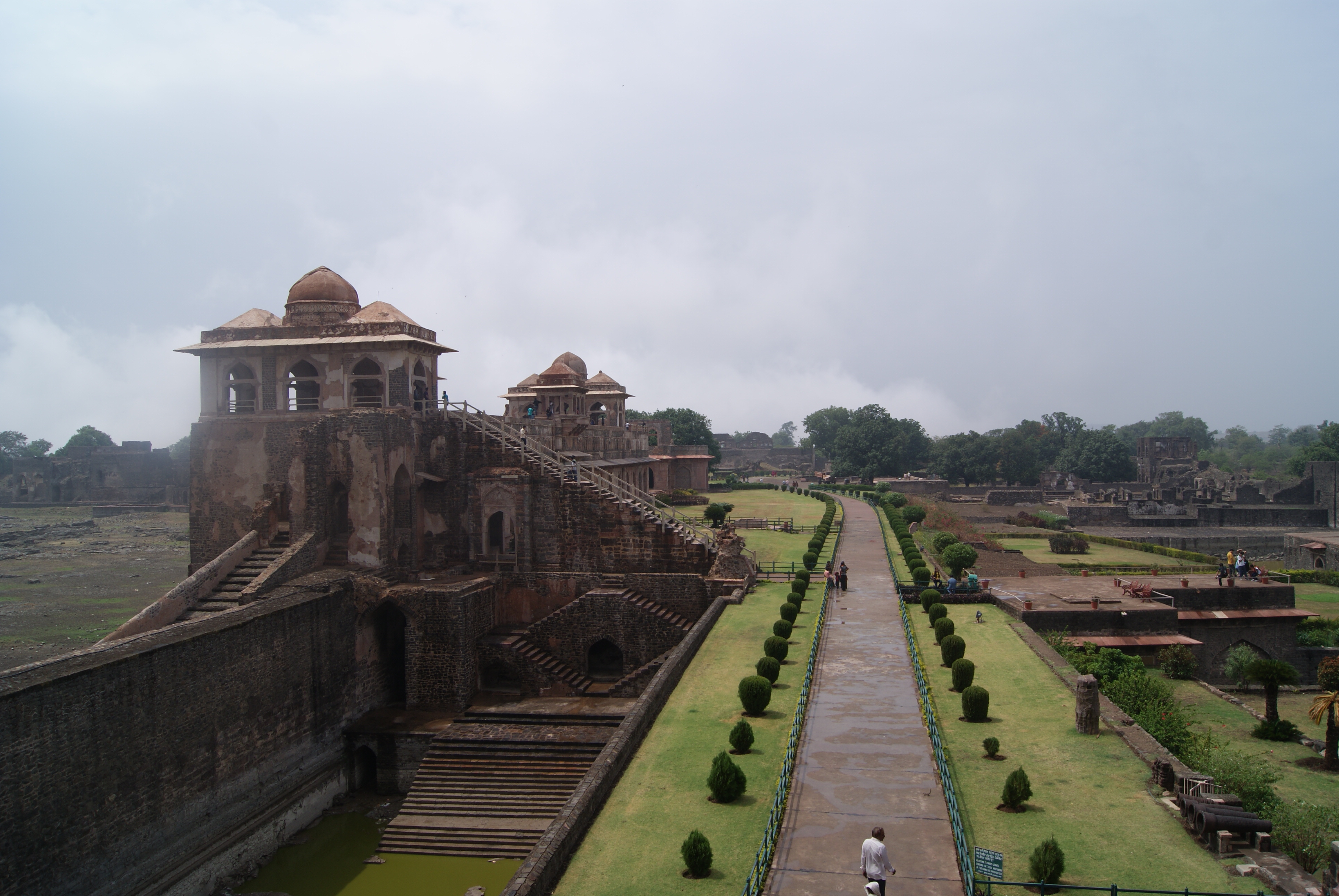
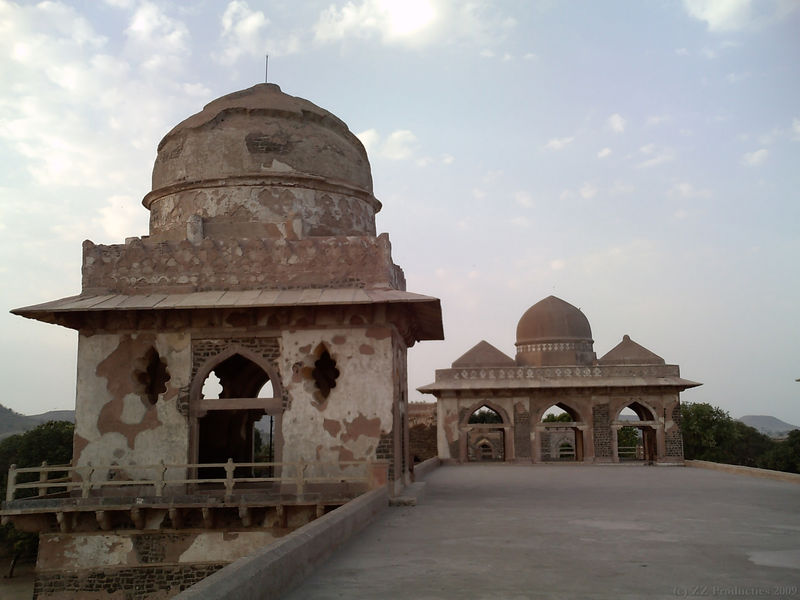





Darya Khan's Tomb, located near the Hathi Mahal in Mandu, is known for its decorated intricate patterns on mosaic tiles.



Hoshang's Tomb is considered to be the first Indian marble monument, constructed in 1440. The tomb is square shaped and is situated near the Jami Masjid, in the Mandu City. It has a dome with towers, courts and marble latticework. The tomb of Hoshang Shah served as a template for Shah Jahan, while constructing the Taj Mahal.



Jami Masjid, inspired by the great mosque of Damascus, the Jami Masjid was conceived on a grand scale, with a high plinth and a huge domed porch projecting in the center the background dominated by similar imposing domes with the intervening space filled up by innumerable domes. One is struck by the huge proportions and the stern simplicity of its construction. The great court of the mosque is enclosed on all sides by huge colonnades with a rich and pleasing variety in the arrangement of arches, pillars, number of bays, and in the rows of domes above. It depicts the Afghan architectural style and is situated on a high ground with a plinth and a domed porch in the center The tomb lies right in front of the Hoshang's Tomb, in Mandu. The construction of the mosque was started by Hoshang Shah and was completed in 1454 by Mahmud Khalji.




Malik Mughith Masjid is situated on the eastern bank of the Sagar Talab. It was constructed during the reign of Muhammad Ghori, by Mughith al-Din Ulugh-e A’azam Humayun. It is a 15th century mosque, adorned with Islamic calligraphy and turquoise tiles on the main entrance.
Rupmati Pavilion, originally built as an army observation post, is a huge sandstone structure situated south of the Baz Bahadur Palace. Rani Rupmati, the queen of Baz Bahadur, used to live at this site. From here, she could see the palace and the Narmada River. It is also an ideal place for watching the sun set over the River Narmada.According to legend, the music loving Baz Bahadur built this pavilion to lure beautiful singer Rani Roopmati to move here. His palace further down the hill side was where he would play music to serenade her. The love story has a tragic ending-- because Mogul emperor Akbar, lured by her beauty marched on the fort. Baz Bahadur fled and Rani Roopmati committed suicide by poison.




Baz Bahadur's Palace was constructed in the 16th century by Baz Bahadur. The palace lies just below the Rupmati's Pavilion and has high terraces and large halls. It has been built in the traditional Afghan architectural style and is a reminder of the tragic love story of Rani Rupmati and Baz Bahadur.



Rewa Kund, a small reservoir constructed by Baz Bahadur, was used for supplying water to Rupmati Pavilion.Today, the pool is revered as a sacred spot.
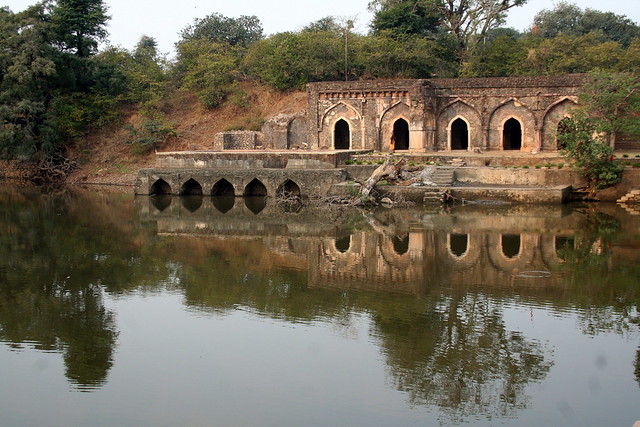
The Nilkanth temple, devoted to Lord Shiva, is situated on the edge of a deep gorge in Mandu. The shrine has a courtyard and a holy pond fed by a nearby stream. There is also the Nilkanth Mahal, dating back to the Mughal era, situated near this temple. In its tree- shaded courtyard, a sacred pond is fed by a stream, and pilgrims still gather to worship here.
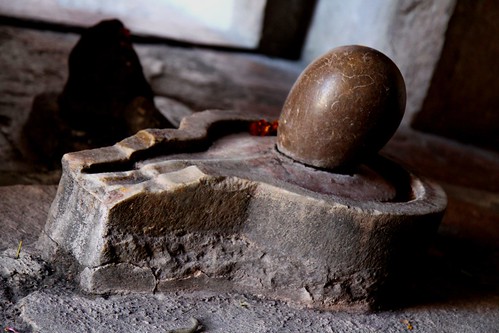
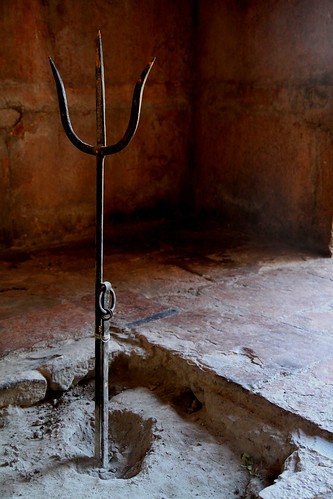
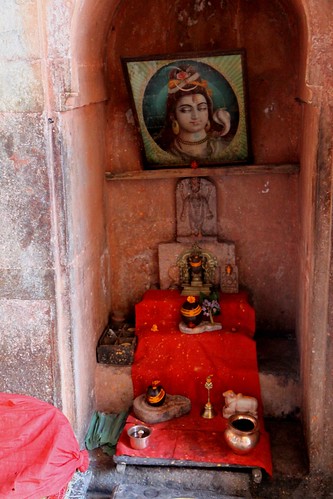
Nilkanth Mahal: Belonging to the Mughal era and close to the Nilkanth shrine, this palace was constructed by the Mughal governor, Shah Badgah Khan for Emperor Akbar's Hindu wife.This palace was built by Akbar, on the site of a shrine of Shiva, for his Hindu wife. On the walls here are some inscriptions of the time of Akbar referring to the futility of earthly pomp and glory. Hathi Mahal, Darya Khan's Tomb, Dai ka Mahal, Dai ki Chhotti Behan Ka Mahal, Malik Mughit's Mosque and Jali Mahal are some of the other fascinating monuments. There is also the Echo Point, the 'Delphic Oracle' of Mandu. A shout from here reverberates far below and is heard clearly back. The Lohani Caves and Temple Ruins, not far from the royal enclave area also merit a visit due to their association with Mandu's history and monuments. Sunset Point, in front of the caves affords a panoramic view of the surrounding countryside.
.jpg)
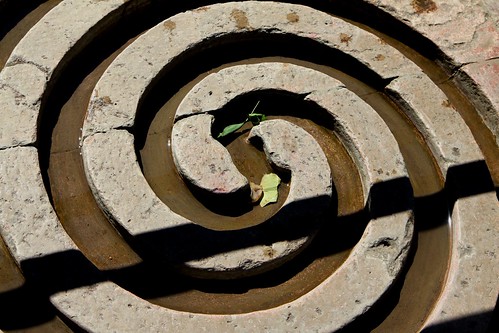
Hathi Mahal, also called the Elephant Palace, was named after the large pillars resembling the legs of an elephant.


Dai ka Mahal, also known as the Nanny's Palace, was a residence of women who were hired for looking after the infants of the Mandu rulers.


Dai Ki Chhotti Behen Ka Mahal is an octagonal tomb situated on a raised platform with huge strips of blue ceramic tiles.
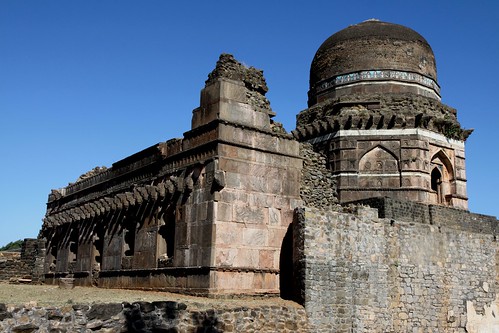
Chhappan Mahal Museum is situated inside the 16th century Chhappan Mahal, in Mandu. In 1990, this heritage building belonged to the Puar Dynasty of Dhar and was converted into a museum for displaying the rich cultural and tribal history of the region. The main highlights of the museum are the Bagh Caves, frescos, Stone Age relics and articles belonging to the rulers of the region.There are four galleries in the museum, namely the Drishyika, Mandapika, Aranyika and Poorvika.
Dilawar Khan's Mosque is one of the earliest Indo-Islamic structures at Mandu. It was constructed during the reign of Dilawar Khan Ghauri in 1405. The mosque has a central entrance, corridors on three sides and a prayer room.
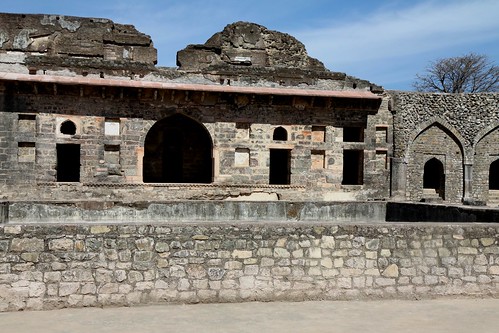
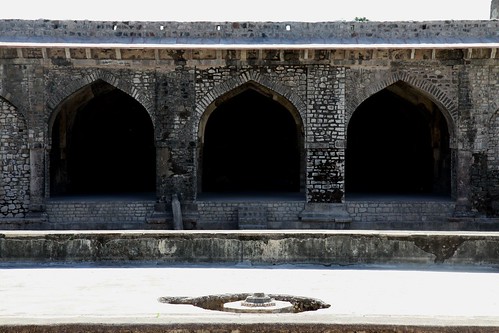
Shri Mandavgarh Teerth, situated inside the Mandavgarh Fort, is devoted to Shri Suparshwanath Bhagwan. There is a white stone idol of Shri Suparshwanath Bhagwan, in the padmasana posture in this temple. A trust called the Shri Jain Shwetambar Teerth Pedhi manages this temple, along with the nearby dharamshala and bhojanshala.
The Bagh Caves have around nine Buddhist caves that date back to the period between 400 AD and 700 AD. All these caves are known for ancient paintings that are similar to the paintings of the Ajanta Caves. The Bagh Caves are rock-cut caves, used by Buddhist monks as residence.


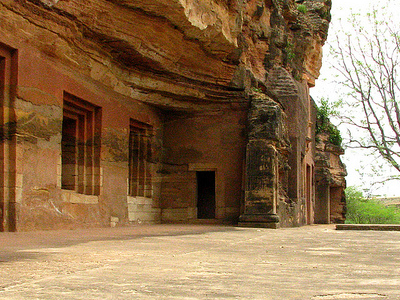
No comments:
Post a Comment